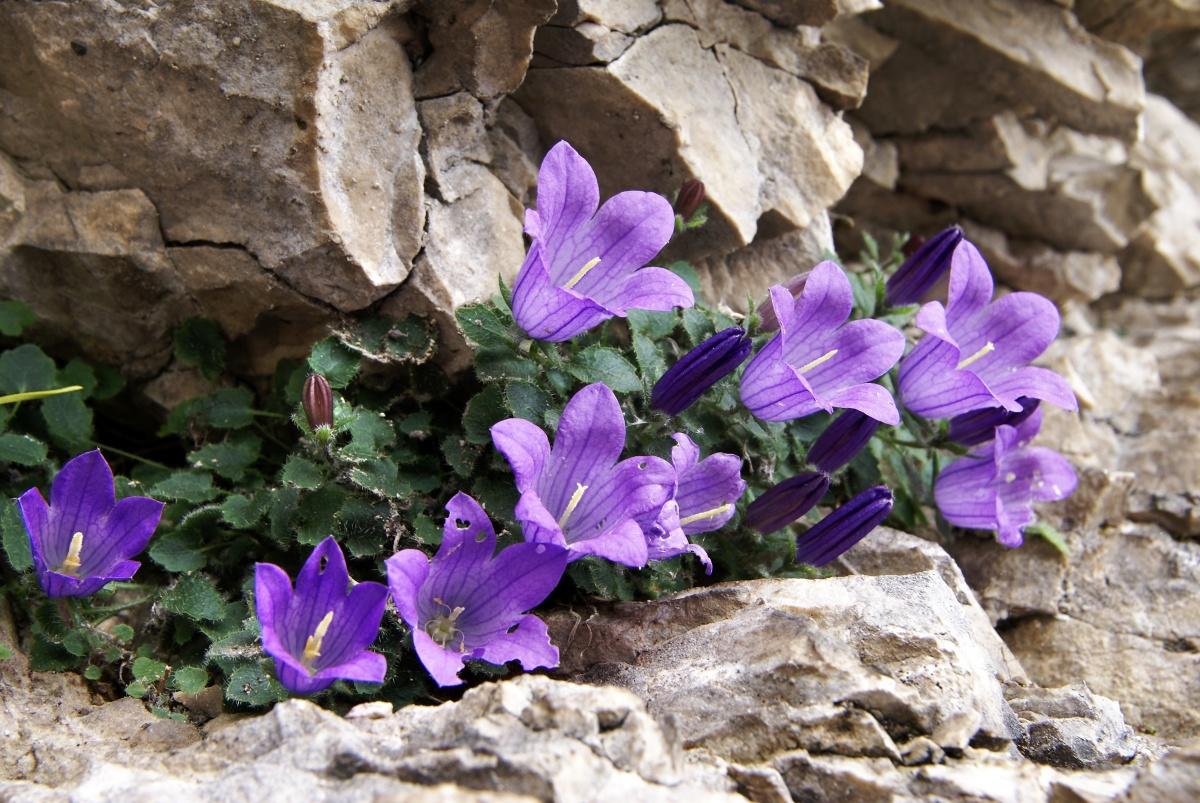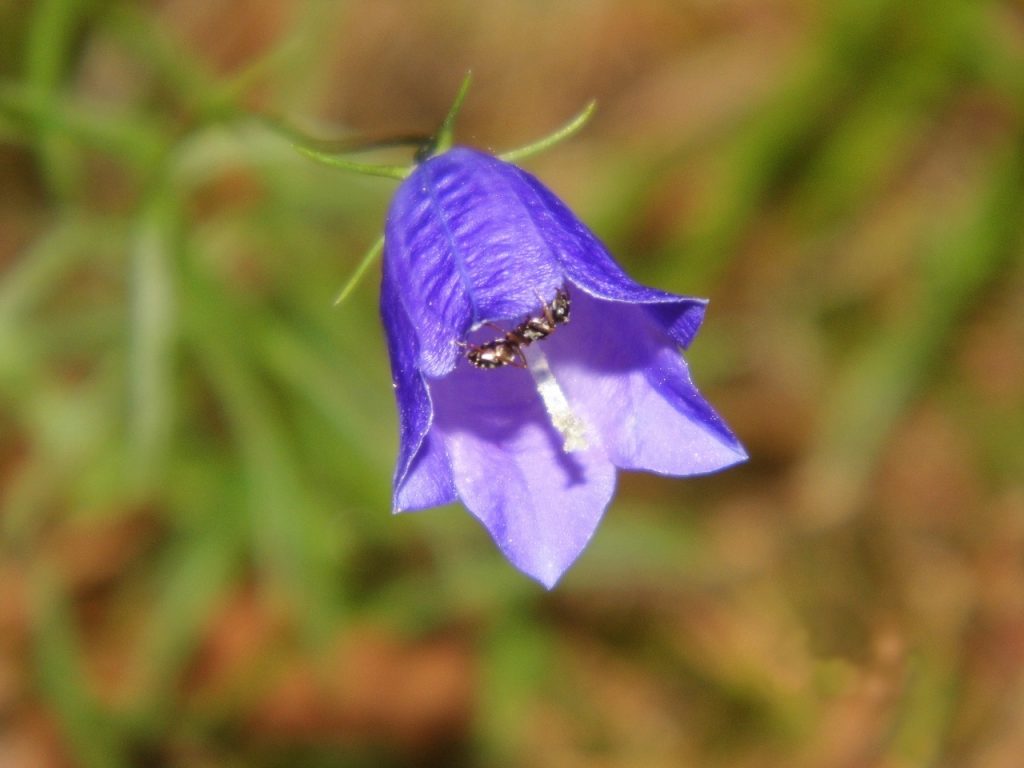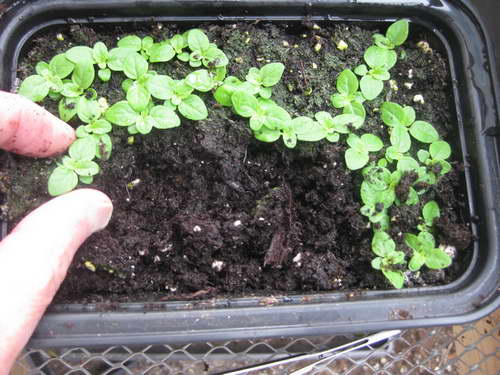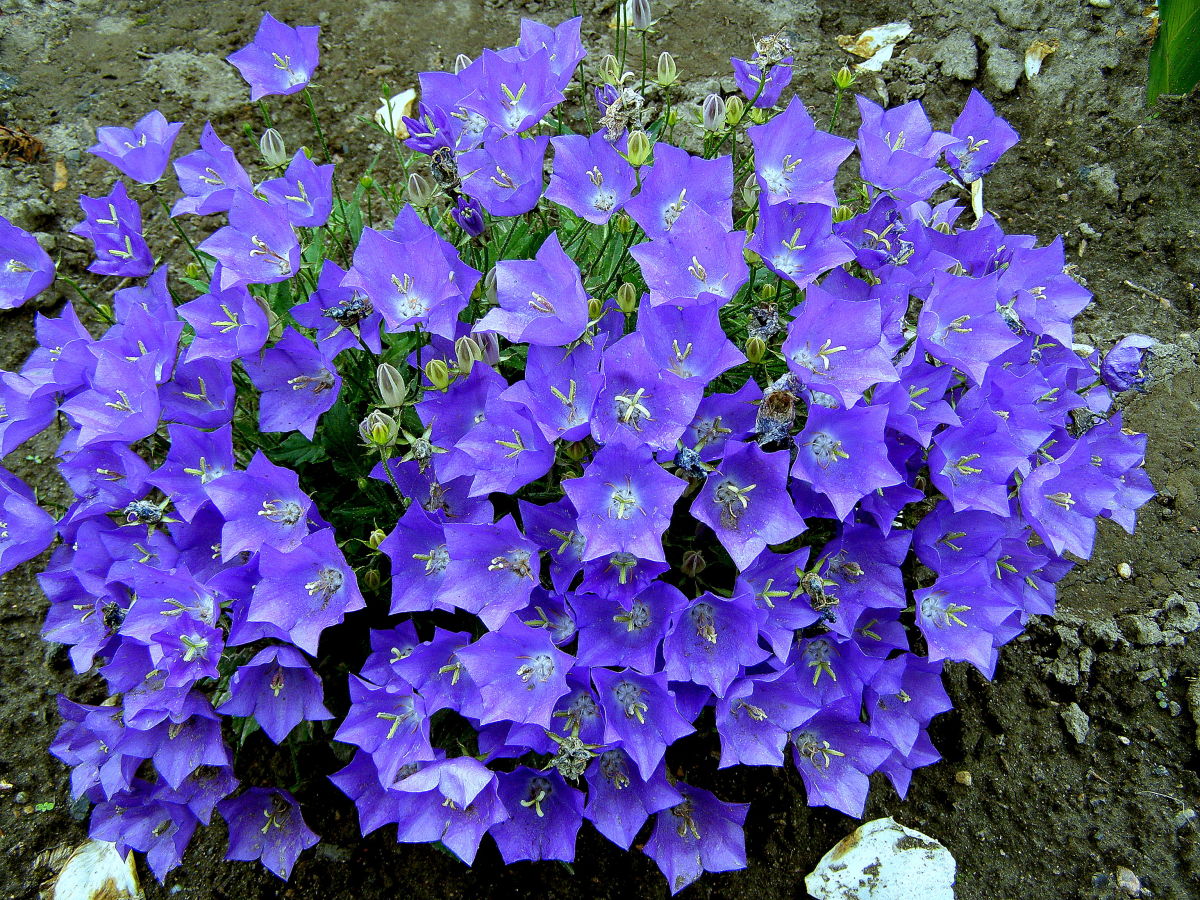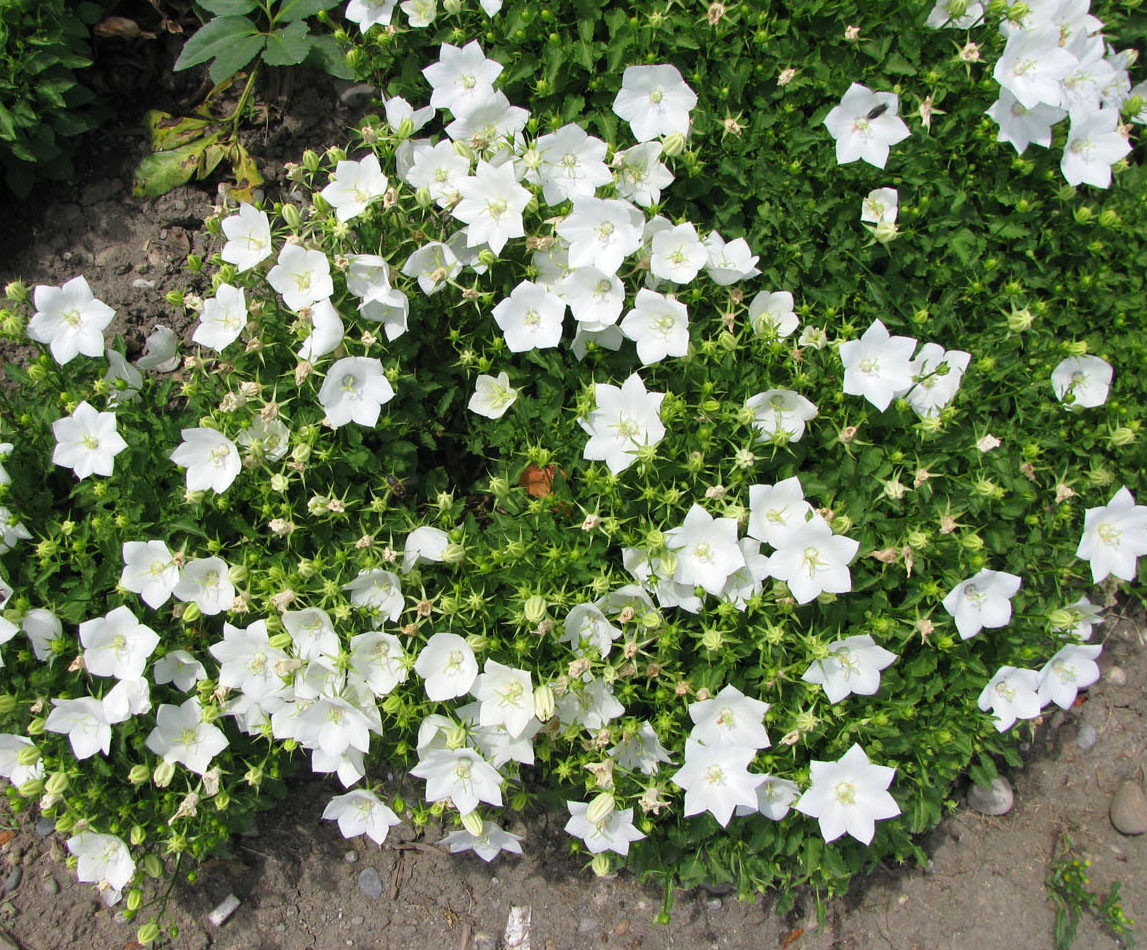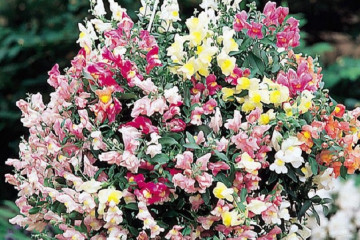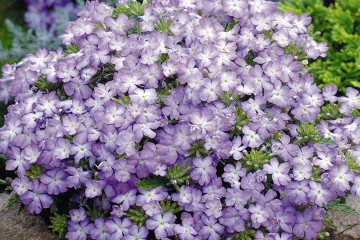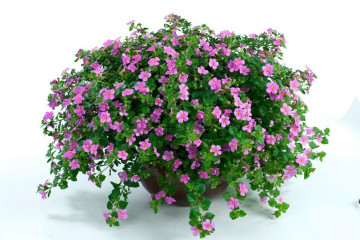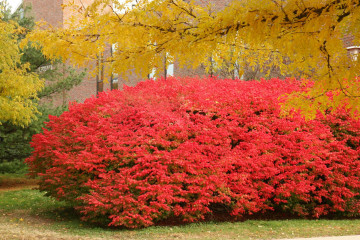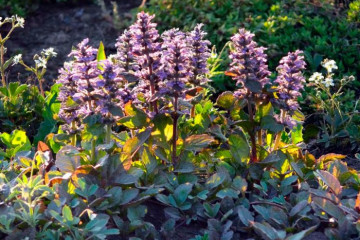Carpathian bell - growing and planting by seeds
Content:
The Carpathian bell is a unique plant that will delight with lush flowering for several months. Gardeners are positive about the cultivation of such a crop, since even a beginner can cope with this. Such species grow on Belogorie.
What does a Carpathian bell look like?
Home flower beds can be decorated with almost wildflowers, namely bells from the Carpathian Mountains. The species is unpretentious to care for, is not afraid of frost and blooms almost all summer. Lush bushes are actively used in landscape decoration. Many growers prefer this particular culture, since the bushes can do without transplanting for up to five years.
It is an ornamental plant and belongs to the Kolokolchikov family. The natural habitat is the limestone cliffs of the Carpathians, therefore the bell has a corresponding name. Many gardeners use the second name alpine bells, since the culture is additionally widespread in the mountains of Central Europe.
The cultivated plant is used for the design of flower beds and garden plots.
The culture is a herbaceous perennial plant. Outwardly, the plant practically does not differ from wild-growing bells, but it still has its own characteristics. There are several particularly popular varieties that are found in the flower beds of flower growers and gardeners. Flowering occurs in early June and continues until late autumn. Flowers are located along the pedicel and give way to abundant flowering.
External data of the flower:
- bush with thin stems and pedicels;
- the height of the aboveground part reaches 30 cm;
- the shape of the bush is spherical;
- leaves are collected in air sockets in the root zone;
- a bowl-shaped flower with a diameter of 5 cm;
- color of buds from white to purple.
Popular types of bells for growing in the garden
The Carpathian type of bell is a perennial type of herb, which is represented by a huge variety of varieties. The most popular are:
- blue;
- white;
- Dwarf;
- blue.
These varieties are distinguished by the miniature bushes. Many other plant variants are less relevant - these are Ballad and Elf. Clips is considered a less relevant variety.
Bell carpathian white
In botanical circles, it is also called just white. The variety is distinguished by the color of the buds. The petals are white. Their edges are slightly wavy, which gives the flower an elegance. It is a compact plant with a unique appearance and long flowering time.
Bell carpathian blue
The second name of the variety is Goluba, or Weiss. Blue buds with a diameter of 4 cm. Round-shaped bushes about 20 cm high. About 20-30 buds can bloom on one copy at a time.
Bell Carpathian Gnome
The Gnome bell has one distinctive feature - it is a short bush about 15 cm. The color of the buds can be pale blue, purple, white.
Bell carpathian blue
The blue variety is the closest in appearance to its wild-growing relative. The buds are colored deep blue. At the same time, the flowers are in harmony with the dark green color of the leaves.
Conditions for growing bells
You can grow a flower in any climate. It is important to properly propagate the plant. The only effective method is sowing seeds and planting seedlings. But the procedure must be done correctly.
Growing a bell from seeds
The Carpathian bell will bloom in the first year. It is worth choosing the right sowing time, painstakingly caring for the sprouts. Next, it is landed in open ground.
The main thing is to choose the right time for sowing. It is advisable to prepare containers with the substrate already at the beginning of February, and the planting itself should be done at the end of the same month. If you lay the planting material later, accordingly, the seedlings will have to be planted in the flowerbed not at the beginning of spring. This can lead to the fact that timely flowering does not occur.
Seedling care
It is not enough just to plant seeds in the right soil, they need constant and careful care. It is often difficult for beginners to cope with this principle of growing bells, so they acquire already mature bushes.
Normal Growing Conditions:
- the air temperature should be 20 ° С;
- a box with planting material must be installed on the windowsill on the sunny side of the house;
- daily airing of the room and spraying of soil from a spray bottle;
- after a week, go to hardening the seeds - move the box to a cool place, where the temperature can drop to -4 ° С. To prevent the material from freezing, you need to cover the ground with snow.
It is difficult to germinate seeds due to their whimsicality to temperature, watering and lighting. Hardening is a mandatory step.
Seedling care
Seedling care is also not easy. When the first shoots appear, you need to place the container in a room where the temperature will not be higher and not lower than 15 ° C. The first shoots must be planted separately so that they do not clog the rest of the shoots. Care for seedlings is identical to caring for seeds in the first week after sowing, abundant lighting, good watering, airing the room, the temperature is not lower than 15 ° C.
In open ground, seedlings are planted at a time when there are at least three leaves on the bushes. Beforehand, it is worth preparing a place for planting, the land must be well fertilized. If possible, you need to add sod land and sand.
Further care
To grow lush flowering bushes, you need to organize the correct watering regime. It is not necessary to water the plant in the spring. Mulching should be organized on hot summer days. In autumn, abundant watering can be stopped.
Top dressing
Organic or phosphate fertilizers can be applied once a month. The mineral complex is also suitable for a flower. Sometimes you can add mullein, but in small quantities.
Features of care during flowering
At the time of flowering, it is desirable to do periodic watering. Additionally, feed, but do it carefully. If you overdo it with fertilizers, the leaves will grow, and the flowers will begin to dry.
Resting care
It is simple to take care of the plant during the dormant period: you need to stop completely or partially watering, feeding and gradually remove the faded buds. In accordance with the degree of yellowing of the leaves, they also need to be removed.
Preparing for winter
The main condition for preserving the plant for the next year is preparing the bell for winter. There will be no difficulties in this regard. It is necessary to "knock down" the above-ground part, namely to cut off the stem before frost and cover the ground in the area of the root system with leaves.
Potential pests and diseases when caring for a bell
If the bush grows for a long time in one place, then harmful microorganisms can accumulate in the soil between the root processes. If the weather is rainy, then it is worth waiting for the invasion of slugs, salivary penny. Mustard powder or a special product will help get rid of them.
The culture looks very attractive. Too painstaking care of the plant is not required. Only the process of growing seeds can be problematic. During the flowering period, you need to carefully monitor the state of the flowering bush. A bell of this type is used to decorate flower beds, alpine hills, gardens.

